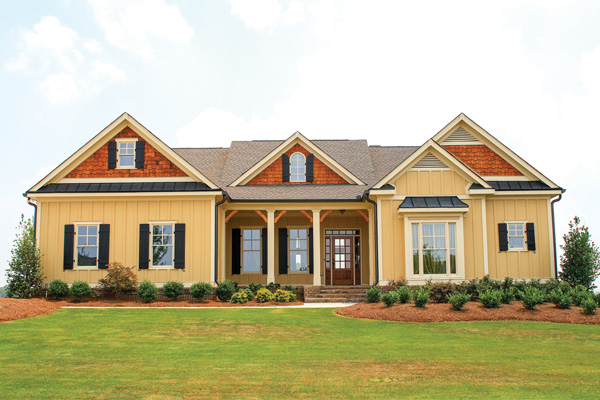The next time you get behind a slow-moving tractor-trailer hauling what looks like a house, or parts of one, don’t scoff. The end result may be a better-built, less-expensive place than the one you live in.
Sure, most people prefer to live in a so-called stick-built home: one that’s put together on the job site, board by board, nail by nail. But it may surprise you to learn that many houses are built, at least to some degree, offsite in a controlled environment – out of the weather and with far less waste.
The broad heading for this aspect of home building, which Tom Hardiman at the Modular Home Builders Association calls “three-dimensional volumetric construction,” is prefabrication (“prefab” for short).
There are many types of prefab. One is panelization, a term that covers several different techniques. Devin Perry, director of the Building Systems Council at the National Association of Home Builders, says it’s “a catch-all” label that includes pre-engineered floor and ceiling trusses and entire walls. The walls can come framed out, ready to be lifted into place, or they can be almost complete with siding, drywall, wiring, plumbing, windows and insulation.
Many major builders who put up the same three or four models over and over again use some form of panelization. But most smaller builders, the guys who put up only a few houses a year, still prefer to build the old-fashioned way, maintaining that it’s cheaper to do so.
However, Hardiman says the high demand for houses, rising costs and the lack of labor to build them are causing more and more builders to rethink that assessment. “They realize they can’t keep building like they used to,” he says. “They have to be more efficient.”
And building in a climate-controlled factory is nothing if not efficient. Here’s a shorthand version of the process:
The materials are sent to a factory, where they are stored under cover, preventing warping from snow, rain and the hot sun. As the lumber is needed, it’s placed on a series of rollers where it is cut – sometimes by a skilled worker, other times by a programmed robot – to the correct size. Still indoors, the pieces are put together, placed on a flatbed truck and hauled to the job site.
It happens quicker than the lumber could be cut and assembled on property – and remember, time is money. There’s very little waste, if any, and no lost work days because of harsh weather conditions.
There are many other types of prefab construction, including modular homes, manufactured homes, log and timber homes and structured insulation panels. Modular and manufactured are two of the more common.
Modular construction is a method in which the house is built in large three-dimensional boxes or modules in the factory and shipped to the job site, where they are lifted into place by a crane. Once assembled and permanently attached to a foundation, they are virtually indistinguishable from conventionally built houses. And they are built to local building codes, so they meet the same requirements as site-built houses.
Surprisingly, considering their positives, modular houses have made very few inroads in the housing sector. They reached their peak in 1998, when they accounted for 4 percent of total housing starts, says Perry of the NAHB. But since 2009, they have taken only a 2 percent share. “There has been a slight decline over the last 20 years,” Perry says, “but interest in them has been increasing lately.”
Once known as mobile homes or trailers, manufactured houses were rebranded some time ago to escape their poor image. Nevertheless, they lost their luster around the turn of the century and are just now starting to make a comeback.
In 2000, manufacturers were in their heyday, producing 350,000 to 370,000 units a year. But by 2014, production had slipped to just 64,000 units. However, the NAHB counted 94,000 manufactured homes last year, and expects production to hit 100,000 this year and 111,000 in 2019.
Unlike other factory-built homes, manufactured homes are built to a federal building code promulgated by the Department of Housing and Urban Development. The HUD codes preempt local codes, which are often more stringent.
The units are completely constructed in a factory on a chassis and axles much like the frame your car rides on. They are then delivered via trailer – hence the “trailer park” term – to the site. Sometimes units are placed on a permanent foundation; sometimes they are simply parked on the lot.
While it is true that many manufactured homes never move again, some do. As long as the home is still solid enough to withstand the rigors of the journey, the wheels can be put back on and the home towed to another site. The chassis will always be there as part of the structure.
Lew Sichelman has been covering real estate for more than 30 years. He is a regular contributor to numerous shelter magazines and housing and housing-finance industry publications. Readers can contact him at lsichelman@aol.com.

